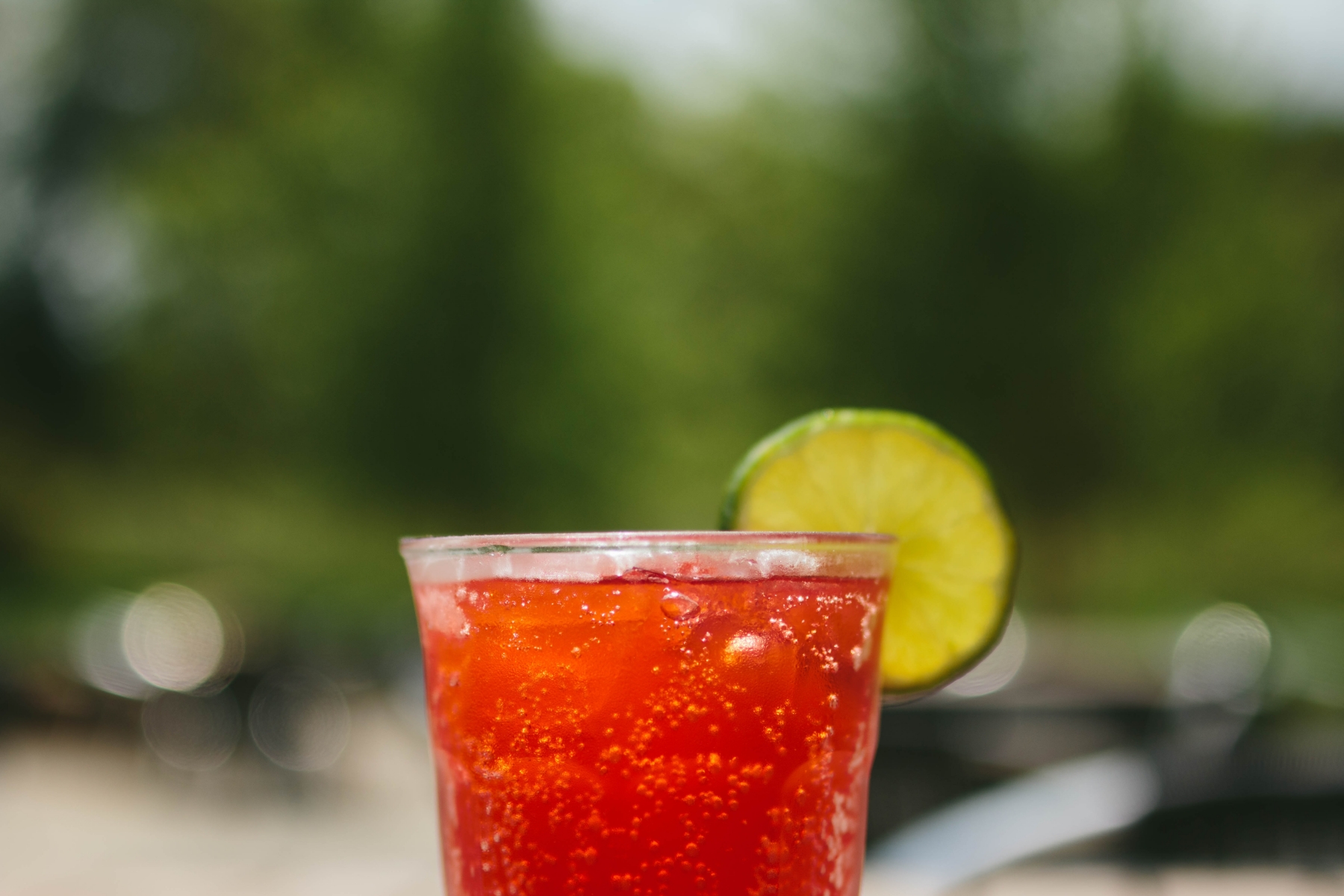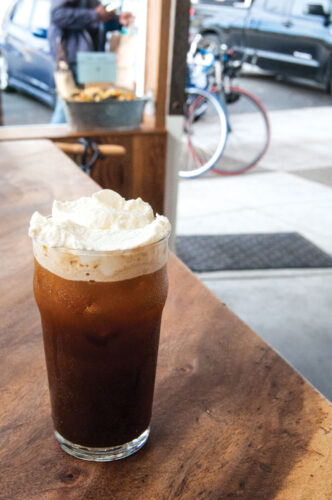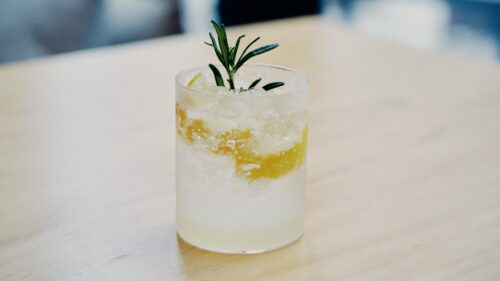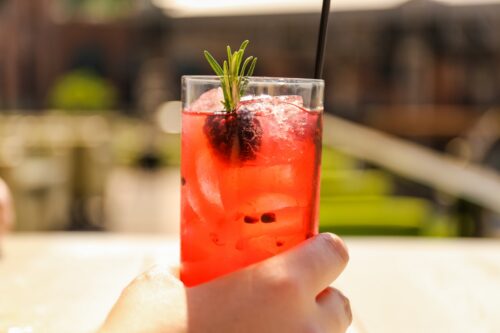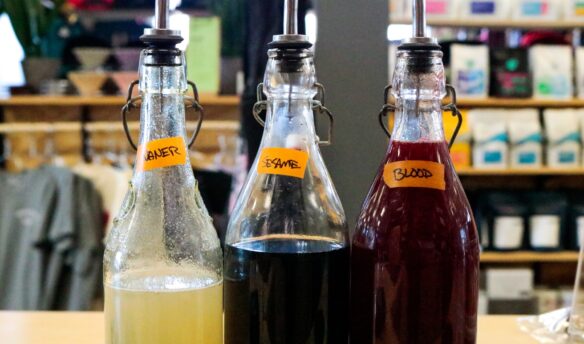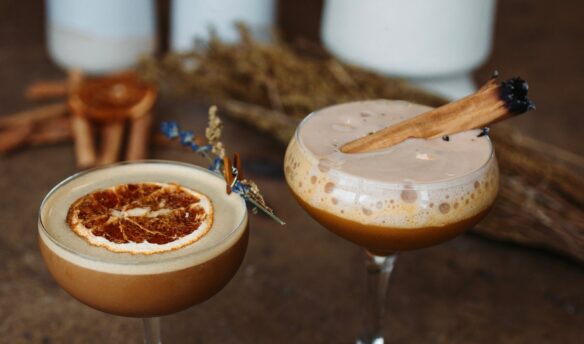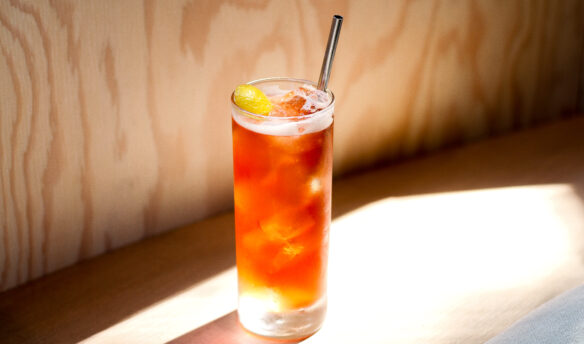A pint glass of San Pellegrino sparkles and pops as one of the baristas at Andytown Coffee Roasters carefully pours espresso into the fizzy liquid, the amber coffee dispersing in slow clouds. The drink has already been sweetened by a house-made brown sugar syrup, and now it will get the finishing touch: a generous dollop of fresh whipped cream.
Like a genteel Irish car bomb or a caffeinated egg cream, the Snowy Plover is almost as pretty as its namesake, an endangered, brown-and-white shorebird that can be found down the street from the roastery, strutting along the city’s western beaches. It’s no wonder Andytown’s Snowy Plover has gained critical acclaim from San Franciscans—the drink an ode to the city’s natural wonder, a craft beverage with personality and class, and a simple yet poignant example of an unstoppable café trend: the artisanal soda.
Fancy Bubbles
Today’s fizzy beverages hearken back to a different time, an era of soda jerks and phosphates, and even further back to the birth of the soda fountain when remedial herbal tonics were served in gilded surroundings. But it isn’t simply nostalgia that has driven us to discard household names for more curated carbonated drinks. Alongside coffee, tea, and alcohol, soda is undergoing a flavor revolution rooted more in bartender mixology than curing a sweet tooth.
With natural sugars, local ingredients, and often crafty science (see: Lactart) behind their creation, today’s sodas are locally thematic, cost-conscious, and an impressive canvas for flavor experimentation. Cafés like Andytown make sparkling beverages that steal the show, proving that something as simple as a signature soda can get customers near and far pining for a drink they’ve never had.
“Seeing something made in front of you, it seems more like a safe and wholesome treat,” says Andrea Ramirez, marketing manager for Torani, the San Francisco syrup company that introduced the Italian soda—flavored sweetener and sparkling water—to the US. Many of today’s handcrafted sodas are more detailed versions of that original drink and, for years, the only made-to-order soda available in most cafés.
But new soda combinations and concoctions are beginning to find space on cafe menus across the globe, and for a good reason—syrups are simple. They pack a punch of flavor with little effort on the part of the barista, they’re shelf-stable, and there are flavors for every mood.
Ramirez says that while Italian sodas built Torani into what it is today, increased interest in personalized drinks, and drinks with a bent towards fountain traditions and cocktail complexity, have pushed even Torani’s portfolio in new directions.
“It’s kind of a new renaissance where everything is customized,” Ramirez says of the trend. From San Francisco to New York City and in between, soda fountain revivals and entire shops dedicated to soda are reimagining what to do with syrup and carbonated water. As usual, the coffee and tea world is more purity focused: handcrafted syrups made with natural sugars and fresh produce, high-end mineral water, single-origin espresso, and tea are new norms in refreshing café carbonation.
It’s easy and affordable to tinker with the Italian soda, although Andytown makes the process look elegant. Lauren Crabbe, the owner of Andytown, says, “Most sodas have some sort of caramelizing agent—usually it’s a mixed list of unpronounceable things. We opted for the simple syrup approach because it’s easy to control.” Syrup-making is easy, only requiring sugar, boiling water, and one’s choice of flavor.
But plenty of newer bottled syrup flavors border on fantastical, with combos integrating flower essences, herbs, spices, and more. In addition to surprising flavors like basil and macaroon, Monin makes a line of tea-infused syrups. DaVinci Gourmet’s Single Origin Syrups come in flavors like Pacific Northwest raspberry and Turkish hazelnut.
A soda water dispenser (a gun, fountain, or water filtration system) and bottled or house-made syrups form a cost-efficient base, with fresh juice, chilled teas, herbs, dairy, and spices offering endless alterations. Some retailers opt for bottled mineral water like San Pellegrino, giving the water a vibrant flavor underneath the other components. There are even wholesale seltzer makers, like Seltzer Sisters in the Bay Area, that supply sparkling water to cafés and restaurants.
Some coffee roasters are beginning to treat carbonation projects with the same care as roasting ones. But instead of barrel-aging select beans, they’re brewing and kegging fizzy teas, coffees, and cascara with other natural flavors. Handcrafted, tapped coffee and tea sodas are even breaching the bounds of the café and making their way into bars alongside stronger suds. In another exciting role reversal, fermented sodas are also making a home in coffee and tea retail.
In Philadelphia, Pollock’s Kefir Pop recently began bottling its fermented sodas made with tibicos, a cultured grain similar to dairy kefir. The resultant soda—in flavors like lemongrass, cranberry lime, ginger pineapple, and vanilla yerba mate—is tart without the vinegary acidity of kombucha and bears added health benefits most sodas don’t have, like vitamins and probiotic flora.
Kegs of Pollock’s are a customer favorite at Bodhi Coffee, a Philadelphia café that goes through three kegs a week, pulled from a row of shiny taps behind the bar. According to Pollock’s co-owner Paul David, the carbonation is a hybrid of natural and forced carbon dioxide, creating a fizzy, slightly tart, and sweet drink popular with all customers. “It’s a simpler taste [than kombucha], not as complex, and in that respect, it has a wide accessibility for people,” says David.
At Verve Coffee Roasters in Santa Cruz, Dr. Kefir, another “soda” made with water kefir grains, integrates fresh juice, tea, and some of Verve’s carefully roasted beans. Dr. Kefir founder Brian Lovejoy says the beverage, on tap and in bottles, alters customer perceptions of sweet refreshment while filling the category for those who need a pick me up but want something more natural.
Throw It On The Line
Draft systems might sound tricky, but there is no wiser investment when it comes to freshness. If a café is planning regular house-made signature sodas, fermented or otherwise, there is something to be said for serving those creations in top form. And there is the bonus of having the freedom to put other offerings on tap, like cold-brewed coffee, which—when nitrogenated—becomes another rich take on pop.
As bartending tricks infiltrate soda-making, it’s surprising how often concoctions integrate espresso. For the same reason that espressos often get a palate cleanser of sparkling water, baristas are finding that carefully proportioned espresso sodas (like the Snowy Plover) can liven the flavors of the coffee rather than hinder them.
“Bubbly is one of those things that if you have a good espresso, it’s going to bring out amazing aspects of that espresso,” says Crabbe. At a pop-up collaboration with a cheesemonger last year, Andytown served a soda made from a single-origin Ethiopian, sparkling water, and elderflower simple syrup. Instead of getting lost, the complex notes of the coffee were heightened in the bubbly drink. With ingredients like those and dialed-in recipes, a soda can go beyond refreshment to amaze.
Quirky sodas are nothing new. Jones Soda Co. has been a mainstay in many cafés since the mid-nineties, bringing flavors like blue bubblegum and fufu berry into soda consciousness. And the Italian soda has paved the way for a world of customized drinks. Sodas aren’t going anywhere—but they can evolve with the times, integrating flavors and ingredients a café can be proud of.
Four Terms To Know When Serving Soda
Lactart: This soda shop throwback is also a popular additive in cocktails. Dairy-derived lactic acid puts a little chemistry in the cup, lending a tart, citrusy flavor to sodas with a creamy component.
Bitters: Aromatic bitters are an easy way to give fresh sodas an herbaceous tingle. Bottled digestifs don’t take up much bar space and add dimension to drinks with just a few drops. Check out classic makers like Fee Brothers and Peychaud’s or quirky renditions from New Orleans’ Bittermens.
Dairy: Cream, milk, or whipped cream can turn a soda into a decadent dessert and play nicely with a dose of Lactart. Just beware of the acidity of certain ingredients when dairy is involved.
Bottles: Riding the artisan soda wave can be as simple as placing an order. The sales hook for a cold case stocked with smaller-scale soda brands like Jones Soda Co., Fentimans, and Belvoir Fruit Farms are natural cane sugar, friendly wholesale relationships, and artful, recyclable bottles.
Regan Crisp is Fresh Cup’s associate editor. Cover photo by Battlecreek Coffee Roasters
This article was originally published on May 4, 2015, and has been updated to meet Fresh Cup’s current editorial standards.

